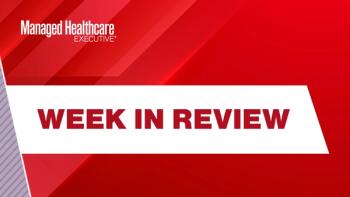
Three major forces behind healthcare payer consolidation
For health plans, the recently announced Anthem-Cigna deal signals that the industry is responding to structural changes in healthcare that have been building over the past few years.
StoneFor health plans, the Anthem-Cigna, Aetna-Humana and Centene-Health Net deals signal that the industry is responding to structural changes in healthcare that have been building over the past few years. Those changes are by no means complete, and neither is consolidation in healthcare.
Related:
Three major forces-none of which are losing momentum-are driving this consolidation:
1. Desire to broaden the portfolio and need for distinct expertise. Commercial carriers are looking to expand into Medicare, Medicaid and public exchanges-all of which require distinct new capabilities. Broadening the portfolio can offer greater scale for negotiating with providers in a local market, some risk diversification from volatility in a single segment, and the potential for synergies across customers such as Medicare age-ins and between Medicaid and public exchange segments.
2. Struggles with profitability. Recent regulations, the transition to value, and management of new populations are leading to significant struggles with both medical and administrative cost management. Successfully achieving scale efficiencies from an acquisition hinges heavily on integration and execution success. A plan that roughly doubles its membership can reduce administrative costs by 20%. The ability to achieve greater local scale for network contract negotiations and to drive greater value through accountable care organizations and alternative arrangements is also an attractive factor for acquisitions.
3. Reorientation toward the consumer. As healthcare becomes more retail and consumer facing through the rise of public and private exchanges, significant investment and organizational changes are required to build needed consumer marketing, engagement, and experience capabilities. In addition, consumers will grow to expect more for their healthcare dollar as they are accountable for a greater share of the expense. Plans need to become more efficient and effective at driving greater consumer value. Scale from acquisitions can help. While early consolidation has largely centered on the first two structural issues, the reorientation toward the consumer is likely the most imposing force in the longer term.
Oliver Wyman research indicates that by 2018, one in three Americans will be buying a different insurance product than they do today, through a channel that didn’t exist three years ago, receiving 30% of their care outside of a traditional health system. Early consolidation is helping the largest health plans diversify their risk, increase their scale, and strengthen market positions.
As the large become larger they will be better able to provide the necessary efficiencies and diversification to fund more consumer-oriented and value-based models and, in doing so, place smaller plans at a significant disadvantage. The patient to consumer revolution requires a significant investment-along with a fundamental change in approach.
The billions of dollars pouring into digital health ($2.8 billion in the first half of 2015 alone, according to
Related:
Likewise, greater control of care delivery and population health is critical toward managing the total cost of care. Ultimately, future consolidation across the industry will be driven by the need to match types of patients (e.g., Medicare Advantage, high-risk, chronic condition) with specific clinical care models and consumer experience capabilities. As a result, we expect more vertical integration to occur and there will be a premium on deals that create exclusivity, so that only the new combined organization benefits.
More consolidation deals are likely to crop up in the coming months, though the exact timing and pace will depend on a host of factors including price of debt, anti-trust review findings, pressure from the government to move more quickly to fee-for-value, consolidation in the provider marketplace, innovation in adjacent industries, and bold moves by new entrants.
Any one of these levers could make a merger and acquisition approach more or less attractive. But one way or another-through merger, partnership, or some other mechanism-it is clear that health plans must ultimately meet the demands of the consumer to have a meaningful position in the future health market.
Terry Stone is global managing partner of health and life sciences at
Newsletter
Get the latest industry news, event updates, and more from Managed healthcare Executive.






















































